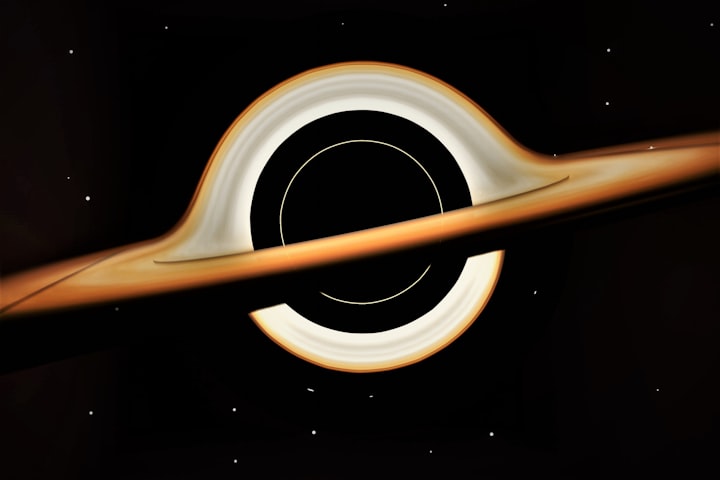Black Hole Snack Attack: NASA’s Swift Spies Sun-Like Star Being Consumed Bite by Bite
Black Hole Snack Attack: NASA’s Swift Spies Sun-Like Star Being Consumed Bite by Bite
Researchers, utilizing NASA's Neil Gehrels Quick Observatory, have distinguished a dark opening in a far off world that has all the earmarks of being repetitively consuming pieces of a Sun-like star. This notable revelation was made conceivable by another technique for dissecting information from the observatory's X-beam Telescope (XRT).
Utilizing NASA's Neil Gehrels Quick Observatory, which sent off in 2004, researchers have found a dark opening in a far off world over and over snacking on a Sun-like star. The item proclaims another time of Quick science made conceivable by an original strategy for dissecting information from the satellite's X-beam Telescope (XRT).
"Quick's equipment, programming, and the abilities of its worldwide group have empowered it to adjust to new areas of astronomy over its lifetime," said Phil Evans, an astrophysicist at the College of Leicester in the Unified Realm and long-lasting Quick colleague. "Neil Gehrels, the mission's namesake, supervised and energized large numbers of those advances. Presently, with this new capacity, it's doing much more cool science."
Evans drove a learn about the unfortunate star and its ravenous dark opening, by and large called Quick J023017.0+283603 (or Quick J0230 for short), which was distributed on September 7 in Nature Cosmology
At the point when a star wanders excessively near a beast dark opening, gravitational powers make serious tides that split the star up into a flood of gas. The main edge swings around the dark opening, and the following edge gets away from the framework. These damaging episodes are called flowing disturbance occasions. Stargazers consider them to be flares of multiwavelength light made when the trash slams into a circle of material previously circling the dark opening.
As of late, cosmologists have been examining varieties in this peculiarities, which they call fractional or rehashing flowing disturbances.
During these occasions, each time a circling star elapses near a dark opening, the star swells outward and sheds material, yet makes due. The interaction rehashes until the star loses a lot of gas lastly falls to pieces. The qualities of the singular star and dark opening framework figure out what sort of discharge researchers notice, making a wide exhibit of ways of behaving to classify.
Past models incorporate an explosion that happened like clockwork, possibly brought about by a goliath star circling a dark opening with 78 million times the Sun's mass. One more repeated at regular intervals around a dark opening with multiple times the Sun's mass, probable brought about by a circling heavenly ash called a white smaller person.
On June 22, 2022, the XRT caught Quick J0230 interestingly. It illuminated in a system around 500 million light-years away in the northern star grouping Triangulum. Quick's XRT noticed nine extra explosions from similar area generally like clockwork.
Evans and his group recommend that Quick J0230 is a rehashing flowing interruption of a Sun-like star circling a dark opening with more than 200,000 times the Sun's mass. They gauge the star loses around three Earth masses of material on each pass. This framework gives a scaffold between different sorts of thought rehashing disturbances and permits researchers to demonstrate how cooperations between various star types and dark opening sizes influence what we notice.
"We endlessly looked for the occasion lighting up in the information gathered by Quick's Bright/Optical Telescope," said Alice Breeveld, an examination individual at the College School London's Mullard Space Science Research center (MSSL) who has dealt with the instrument since before the satellite sent off. "However, there wasn't any indication of it. The universe's fluctuation was totally in X-beams. That aided preclude a few other possible causes."
Quick J0230's disclosure was potential because of a new, computerized search of XRT perceptions, created by Evans, called the Quick X-beam Transient Locator.
After the instrument notices a piece of the sky, the information is communicated to the ground, and the program looks at it to past XRT depictions of a similar spot. Assuming that part of the X-beam sky has changed, researchers get an alarm. On account of Quick J0230, Evans and his associates had the option to arrange extra perceptions of the district quickly.
Quick was initially intended to concentrate on gamma-beam explodes, the most remarkable blasts in the universe. Since the satellite sent off, be that as it may, researchers have perceived its capacity to concentrate on an entire host of divine items, as flowing disturbances and comets.
"Quick J0230 was found around two months after Phil sent off his program," said S. Bradley Cenko, the mission's vital agent at NASA's Goddard Space Flight Center in Greenbelt, Maryland. "It looks good for the identifier's capacity to recognize other transient occasions and for Quick's future investigating new spaces of science."
Reference: "Month to month semi occasional ejections from rehashed heavenly disturbance by a huge dark opening" by P. A. Evans, C. J. Nixon, S. Campana, P. Charalampopoulos, D. A. Perley, A. A. Breeveld, K. L. Page, S. R. Oates, R. A. J. Eyles-Ferris, D. B. Malesani, L. Izzo, M. R. Drive, P. T. O'Brien, J. P. Osborne and B. Sbarufatti, 7 September 2023, Nature Cosmology.
DOI: 10.1038/s41550-023-02073-y
Goddard deals with the Quick mission in a joint effort with Penn Express, the Los Alamos Public Research center in New Mexico, and Northrop Grumman Space Frameworks in Dulles, Virginia. Different accomplices incorporate Leicester, MSSL, Brera Observatory in Italy, and the Italian Space Organization.






Comments
There are no comments for this story
Be the first to respond and start the conversation.